Automotive Applications for Embedded Vision
Vision products in automotive applications can make us better and safer drivers
Vision products in automotive applications can serve to enhance the driving experience by making us better and safer drivers through both driver and road monitoring.
Driver monitoring applications use computer vision to ensure that driver remains alert and awake while operating the vehicle. These systems can monitor head movement and body language for indications that the driver is drowsy, thus posing a threat to others on the road. They can also monitor for driver distraction behaviors such as texting, eating, etc., responding with a friendly reminder that encourages the driver to focus on the road instead.
In addition to monitoring activities occurring inside the vehicle, exterior applications such as lane departure warning systems can use video with lane detection algorithms to recognize the lane markings and road edges and estimate the position of the car within the lane. The driver can then be warned in cases of unintentional lane departure. Solutions exist to read roadside warning signs and to alert the driver if they are not heeded, as well as for collision mitigation, blind spot detection, park and reverse assist, self-parking vehicles and event-data recording.
Eventually, this technology will to lead cars with self-driving capability; Google, for example, is already testing prototypes. However many automotive industry experts believe that the goal of vision in vehicles is not so much to eliminate the driving experience but to just to make it safer, at least in the near term.
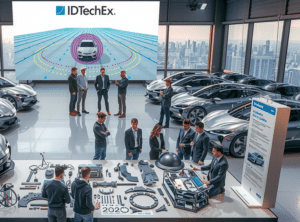
Top-tier ADAS Systems: Exploring Automotive Radar Technology
Radars have had a place within the automotive sector for over two decades, beginning with the first use for adaptive cruise control and many other developments taking place since. IDTechEx‘s “Automotive Radar Market 2025-2045: Robotaxis & Autonomous Cars” report explores the latest developments in radar technology within the automotive sector. ADAS safety systems ADAS (advanced
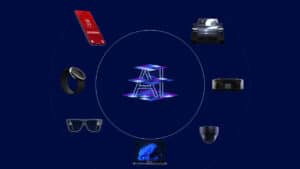
AI Disruption is Driving Innovation in On-device Inference
This article was originally published at Qualcomm’s website. It is reprinted here with the permission of Qualcomm. How the proliferation and evolution of generative models will transform the AI landscape and unlock value. The introduction of DeepSeek R1, a cutting-edge reasoning AI model, has caused ripples throughout the tech industry. That’s because its performance is on
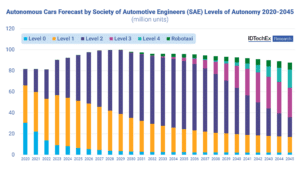
Autonomous Cars are Leveling Up: Exploring Vehicle Autonomy
When the Society of Automotive Engineers released their definitions of varying levels of automation from level 0 to level 5, it became easier to define and distinguish between the many capabilities and advancements of autonomous vehicles. Level 0 describes an older model of vehicle with no automated features, while level 5 describes a future ideal
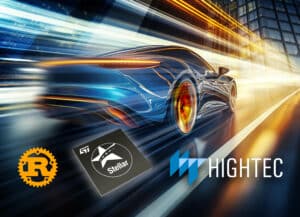
STMicroelectronics and HighTec EDV-Systeme Collaborate for Safer Software-defined Vehicles
Where safety meets safety: ST’s Stellar MCUs certified to the highest level of risk management, ISO 26262 ASIL D, are now supported with the same safety level by HighTec’s Rust compiler Geneva, Switzerland and Saarbrücken, Germany, February 4, 2025 – STMicroelectronics (NYSE: STM), a global semiconductor leader serving customers across the spectrum of electronics applications,

AI Chips Take Center Stage at CES
This market research report was originally published at the Yole Group’s website. It is reprinted here with the permission of the Yole Group. The 2025 edition of the world’s largest consumer electronics conference showcased the latest semiconductors for artificial intelligence applications The CES 2025 conference in Las Vegas showcased the latest semiconductor innovations, offering some

Seeing In the Dark: Infrared for Automotive
Infrared sensors are becoming more popular in vehicles for advanced driver assistance systems (ADAS), in-cabin sensing, and driver monitoring systems (DMS), largely due to advancements in vehicle safety and awareness. IDTechEx‘s latest report, “Infrared (IR) Cameras for Automotive 2025-2035: Technologies, Opportunities, Forecasts“, explores the types of infrared sensors that are commonly used, and forecasts for
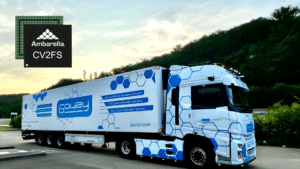
Ambarella and Gauzy Harness Power of AI for Breakthroughs in Advanced Driver Assistance Systems (ADAS), Including Ford Trucks
Gauzy’s AI-powered Smart-Vision camera monitoring system (CMS) leverages Ambarella’s cutting-edge CVflow AI Systems-on-Chip (SoCs) to enhance road safety and redefine urban mobility NEW YORK and SANTA CLARA, Calif. – January 30, 2025 – Gauzy Ltd. (Nasdaq: GAUZ), a global leader in light and vision control technology, today announced that its strategic partnership with edge AI
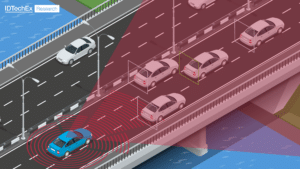
Lidar’s Place as a Mass-market Automotive Sensor
A vehicle using radar and cameras to detect traffic ahead. LiDAR has been touted as a solution to the automotive industry’s endeavor to build safer and completely driverless cars, working towards a world with zero road fatalities and more accessible transport. So, after a decade of development, testing, trials, funding, partnerships, acquisitions, mergers, etc, where
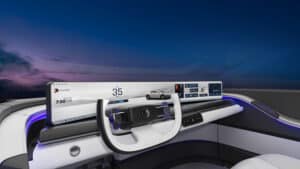
AI On the Road: Why AI-powered Cars are the Future
This blog post was originally published at Qualcomm’s website. It is reprinted here with the permission of Qualcomm. AI transforms your driving experience in unexpected ways as showcased by Qualcomm Technologies collaborations As automotive technology rapidly advances, consumers are looking for vehicles that deliver AI-enhanced experiences through conversational voice assistants and sophisticated user interfaces. Automotive

Visual Intelligence at the Edge
This blog post was originally published at Au-Zone Technologies’ website. It is reprinted here with the permission of Au-Zone Technologies. Optimizing AI-based video telematics deployments on constrained SoCs platforms The demand for advanced video telematics systems is growing rapidly as companies seek to enhance road safety, improve operational efficiency, and manage liability costs with AI-powered

